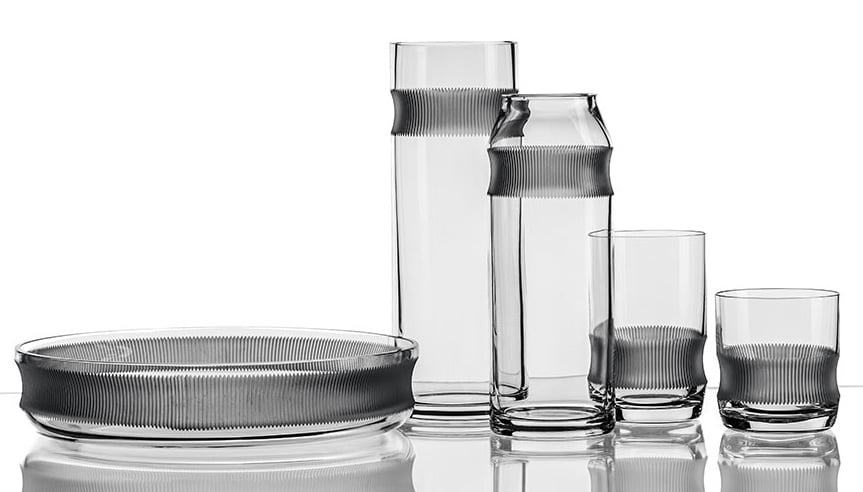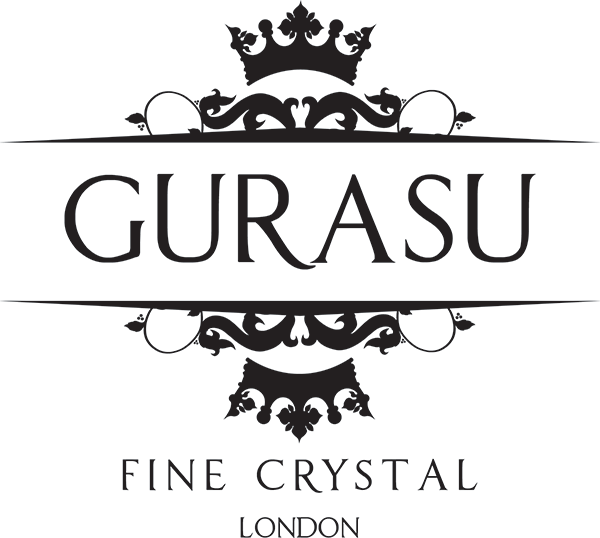Crystal, Lead-free Crystal and Glass – What is the difference?
- Posted on
- By Joanna Maya

Crystal, Lead-free Crystal and Glass – What is the difference?
Crystalware including decanters, stemware, decorative vases or lighting can be made from glass, lead crystal or lead-free crystal. Over the years many of you have asked me what the difference is between these types of glass.
Glass
Glass has been used over the millennia. It is made from silica sand and other minerals such as soda ash and limestone. Glass is even made when lightning simply strikes sand – this is called Fulgurite. The oldest known glassware found was dated from 1400 B.C. Good glassware is clear and tint-free, while inferior, cheaper grades show cloudy bluish or greenish tints.
Lead Crystal

U Jakub Pollag Collection - Bomma Crystal
In 1674 Englishman George Ravenscroft discovered that by adding lead oxides to glass that the appearance of the glass improved and it was easier to melt than traditional glass. It is called “lead crystal”.
In addition, Crystal is heavier than glass due to the lead content, it has a special brilliance due to being highly refractive “light bending power” and gives off a lovely “ping!”.
Thanks to the addition of lead the crystal becomes a softer material. This means it is easier to cut. However, it is more challenging to engrave very fine and detailed patterns. When you cut decorative facets into lead crystal, it sparkles brightly.
The addition of lead oxide to glass also makes it easier for blowers to manipulate without reheating and makes the material better suited for molds, leading to more dynamic designs. Full lead crystal can only be labeled as such if it contains at least 24 percent lead oxide.
Lead crystal has been used for centuries and some of the finest glassware in the world is made from this material. However, recently, there has been some concern about its use in serving food and drink.
Gurasu Crystalware is made of 24% lead crystal. There are crystalware brands, for instance, traditional English Cumbria Crystal, which still makes full lead crystal that contains 30% lead oxide. This crystal tends to be heavier.
The reason for our crystalware being 24% lead crystal was that we started with collections which were hand cut. The second reason was to support craftsmen in the Czech Republic, Poland and England who specialise in lead crystal productions. However, the future plan is to start introducing more variety into our crystal designs and start making lead free crystal glassware to offer an alternative to the lead crystal.
Lead-free crystal glass
As we established, when you cut decorative facets into lead crystal, it sparkles brightly. In modern history, the potential health risks of lead have led to the development of “lead-free crystal glass”. This is made by replacing the lead oxide in the production of the glass with barium oxide, zinc oxide, or potassium oxide.
Lead-free crystal is the ideal material for engraving because it is harder than leaded glass; this keeps the engraving wheel from slipping and facilitates the engraving of extremely fine detail. In addition, the clarity of lead-free crystal is equal to the leaded crystal. The difference will be in weight and the sparkle when cut.
Both lead and lead-free crystal are made with sand, soda ash, and limestone with barium oxide in place of lead.
Both lead and barium give the glass an extra brilliance and clarity not found in the plain glass. Though it can look similar, lead crystal is the only true crystal while the non-lead crystal is a brilliant form of glass.
If you have any questions about lead and lead-free we will be more than happy to answer them in the comments below or via the contact form.
Read more on lead vs lead-free crystal
- ROCK CRYSTAL – A SHORT HISTORY OF LEAD CRYSTAL
- Q&A – LEAD VS LEAD FREE AND WHAT MAKES CRYSTAL SPECIAL AND LUXURIOUS?
- IS IT SAFE TO DRINK FROM LEAD CRYSTAL?






